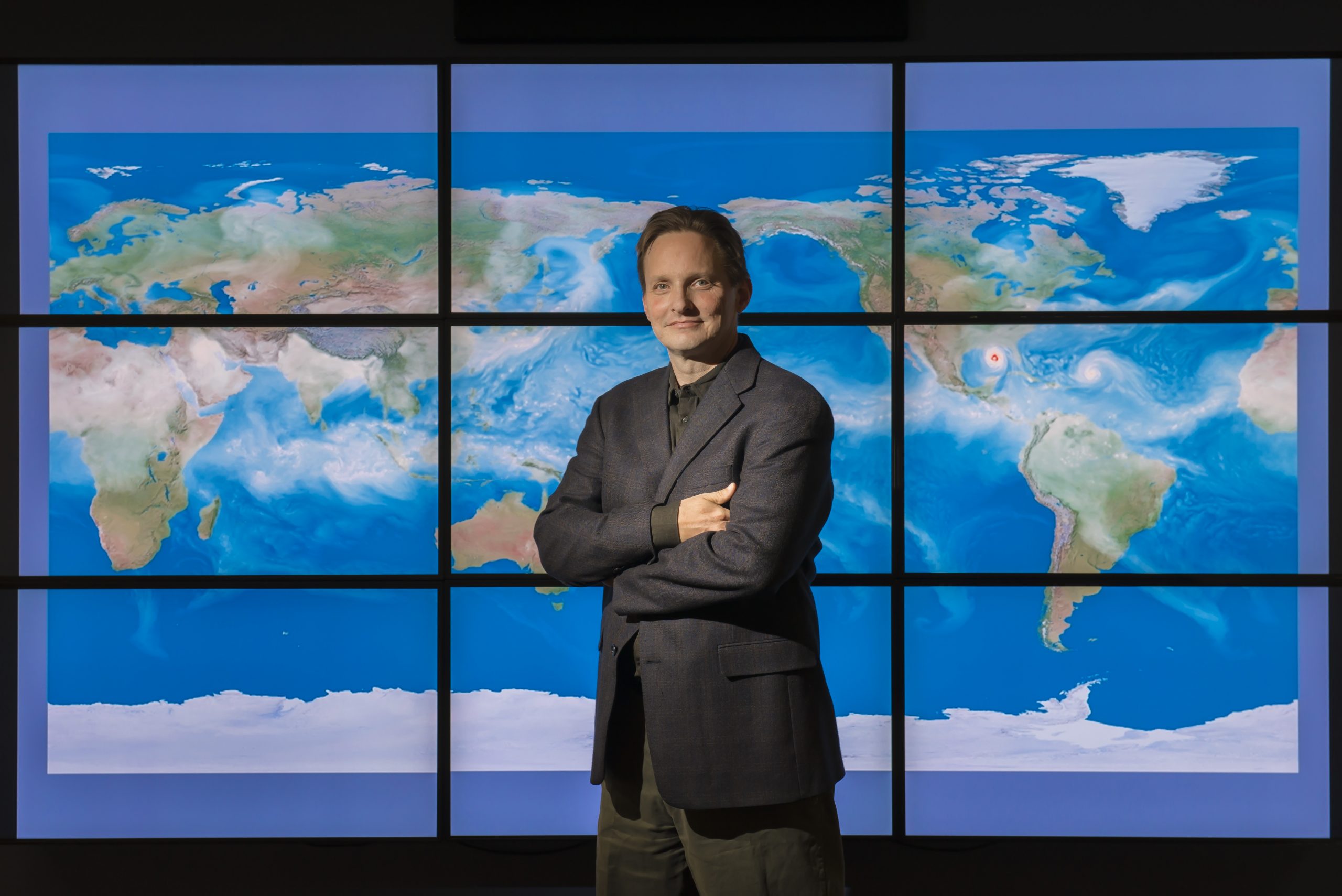
ALBUQUERQUE, N.M. — High performance computing researchers at Sandia National Laboratories are working with the Department of Energy (DOE) and other national laboratories and institutions to develop and apply the most complete climate and Earth system model, to address the most challenging and demanding climate change issues.
Accelerated Climate Modeling for Energy, or ACME, is designed to accelerate the development and application of fully coupled, state-of-the-science Earth system models for scientific and energy applications.
Fourteen institutions will work together to develop the most accurate climate change predictions yet, and investigate key fundamental science questions, such as the interaction of clouds and climate and the role of secondary organic aerosols. The partners include eight national laboratories — Sandia, Argonne, Brookhaven, Lawrence Berkeley, Lawrence Livermore, Los Alamos, Oak Ridge, Pacific Northwest — along with the National Center for Atmospheric Research, four academic institutions and one private-sector company.
Over the next decade, the project will conduct simulations and develop models on the most sophisticated high-performance computers as they become available, including 100-plus petaflop machines and, eventually, exascale supercomputers.
The project initially will examine and try to answer “big science” questions in three areas that drive climate change: the water cycle, biogeochemistry and the cryosphere (areas of the earth where water exists as ice or snow).
- (Water Cycle) How do the hydrological cycle and water resources interact with the climate system on local to global scales? How will more realistic portrayals of features important to the water cycle (resolution, clouds, aerosols, snowpack, river routing, land use) affect river flow and associated freshwater supplies at the watershed scale?
- (Biogeochemistry) How do biogeochemical cycles interact with global climate change? How do carbon, nitrogen and phosphorus cycles regulate climate system feedbacks, and how sensitive are these feedbacks to model structural uncertainty?
- (Cryosphere systems) How do rapid changes in cryospheric systems, or areas of the earth where water exists as ice or snow, interact with the climate system? Could a dynamical instability in the Antarctic Ice Sheet be triggered within the next 40 years?
Sandia’s Mark Taylor, the project’s chief computational scientist, will lead the development of a comprehensive program for workflow, software engineering and computational performance of the ACME modeling system. His team includes mathematicians, computer scientists and software engineers.
“Our work ensures ACME’s scientific program can be achieved with DOE’s Leadership Computing Facilities. We will be applying a wide range of high-performance computing approaches including developing new algorithms specially adapted to these architectures. Only through efficient use of these computers will we be able to model the many physical processes at the fidelity necessary to answer ACME’s science questions,” Taylor said.
Taylor added that Sandia is in an ideal position for its share of the work on ACME because of its extensive experience in developing high-performance-computing environments, in software engineering and in the quantification of computational uncertainties.
The computational team initially will customize the model for use on machines at two DOE Office of Science Leadership Computing Facilities — Titan at Oak Ridge National Laboratory and Mira at Argonne National Laboratory — in preparation for the next generation of exascale architectures.
Applied mathematician Andrew Salinger of Sandia, a software engineering team co-lead on ACME, will help the climate models make better use of the software tools and algorithms created by the DOE’s computational scientists.
“We’ll be setting up the ACME project with modern software engineering tools and processes, improving productivity for the whole project, helping people to develop new features in the code more quickly and making it easier for new people to join the project. We’ll also be putting more software testing into place so that performance experts can make code modifications and be confident that they aren’t changing the science in the process of optimizing the code,” Salinger said.
Salinger said he’ll incorporate computational mathematics libraries developed by DOE into ACME, such as those from the Trilinos project for solving non-linear problems and performing load-balancing. Leveraging DOE’s investment in these areas is one of ACME’s strategies for obtaining the best possible performance on evolving computing systems.
Researcher Khachik Sargsyan is leading Sandia’s effort to strengthen the climate model through uncertainty quantification (UQ). Khachik will be identifying boundaries for uncertainties in predictions generated by land modeling, which focuses on the physical characteristics of vegetation, soil and other terrestrial features at risk from climate change.
To explain how uncertainties come into play, Khachik provided a simple example. “A single simulation of the land model may show that in 100 years, a certain type of vegetation will vanish. With UQ, we can actually quantify how likely it is.”
The UQ methods Khachik and his colleagues develop are nonintrusive, that is, they do not require programming changes to the original model (in this case, the climate model) to which UQ is applied. This important feature allows researchers to apply UQ methods broadly, to fields ranging from chemistry to materials science to nuclear engineering. It also means that older modeling efforts and data gathered in different disciplines can expedite climate modeling UQ.
Initial funding for the effort has been provided by DOE’s Office of Science. More information can be found in the Accelerated Climate Modeling For Energy: Project Strategy and Initial Implementation Plan.